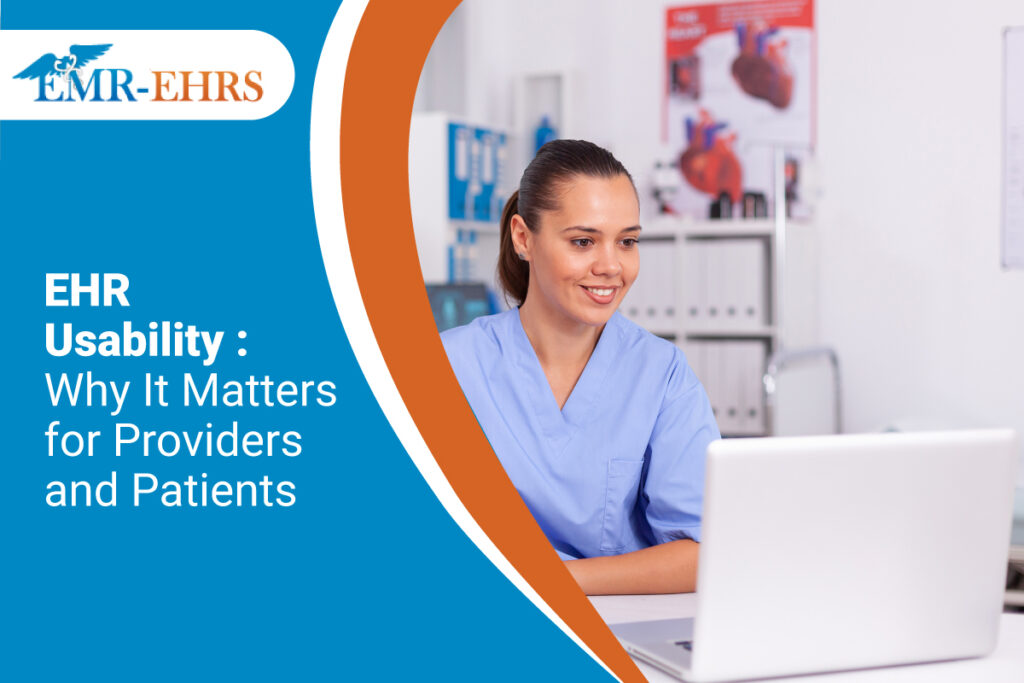
We recognize that electronic health records (EHRs) are essential for modern medical practices, but have you ever thought about how their usability can make or break your daily workflow? Usability and accessibility aren’t just buzzwords—they’re the keys to making EHRs work for you, not against you.
Why does this matter? A user-friendly EHR can transform how you manage patient data, reducing errors and saving valuable time. Plus, with a diverse team that spans different generations, it’s crucial to have a healthcare EHR that everyone can use efficiently, from the youngest digital natives to the most experienced professionals.
Let’s dive into why usability is important and share tips on making EHRs more accessible for everyone in your practice.
Experience the Ease of Our User-Friendly EHRs
Understanding Generational Differences
Intuitive use of an EHR in healthcare can vary significantly across different generations. Each age group has its own set of preferences and comfort levels with EHR technology. By understanding these nuances, you can tailor your systems to be more accessible for everyone on your team.
Baby Boomers
These healthcare veterans benefit from an EHR design that minimizes complexity and enhances readability. Baby boomers often appreciate the larger text, simplified interfaces, and clear instructions. Features like adjustable text size, straightforward navigation, and step-by-step guidance can make their experience more comfortable and efficient.
Generation X
Generation X values multitasking capabilities. They often balance numerous responsibilities and need an EHR system to streamline their workflow. This group requires quick access to patient information, features for managing multiple tasks simultaneously, and tools that reduce redundant data entry.
Millennials and Generation Z
The impact of EHR design is profound for Millennials and Generation Z. As digital natives, they expect seamless technology integration and prioritize mobile accessibility. This group raves about EHRs that are fully functional on mobile platforms, have user-friendly interfaces, and can synchronize with health wearables. These features enhance their engagement and boost electronic record-keeping in healthcare practices.
Discover the convenience of our user-friendly EHRs—browse our glowing testimonials and get in touch to learn more!
Designing for Older Adults
As the healthcare industry evolves, it’s crucial to design EHRs that cater to older healthcare providers’ needs. Here are some key considerations:
- Larger Text and Icons
Enhancing readability and navigation is essential. Incorporating larger text and icons makes EHRs more user-friendly for older clinicians. Clear, easily visible text and icons help them navigate the system more efficiently, reducing the risk of errors.
- Simplified Navigation
Another crucial consideration is reducing the number of clicks required to perform everyday tasks. By simplifying navigation and leveraging icons, you can ensure that older clinicians can access necessary information quickly and easily. This, in turn, enhances the user-friendliness of EHRs by streamlining the user interface and minimizing complexity.
- Training and Support
Offering tutorials, webinars, and ongoing support tailored to older adults is crucial for effective EHR usage. Comprehensive training materials and personalized support help older clinicians feel confident and competent when using the system. Ongoing support ensures they can address challenges and fully utilize the EHR’s capabilities.
Enhancing Usability for Younger Users

Young healthcare professionals are embracing technology to make their work more efficient. Improving the user experience of electronic health records is crucial to meet the needs of this tech-savvy generation.
Here are some key strategies to engage these team members:
- Mobile Accessibility
Ensuring full functionality on smartphones and tablets is paramount. Younger users are accustomed to using mobile devices for various tasks, including accessing information on the go. By optimizing EHRs for mobile accessibility, healthcare professionals can conveniently access patient data, review records, and input information from anywhere, at any time.
- Integration with Wearable Devices
Syncing health data from wearables to EHRs enhances usability for younger users who often rely on wearable devices to track health metrics. Integrating wearables with EHRs allows seamless data transfer, providing a comprehensive overview of patients’ health status. This integration enables young professionals to provide personalized care based on real-time data collected from wearable devices.
- Gamification and Engagement Tools
By incorporating gamification elements (e.g., badges and progress tracking), EHRs can transform into a tool that enhances usability and fosters a sense of achievement and motivation among younger healthcare professionals. This approach encourages regular and efficient use of the EHR, leading to increased engagement and improved workflow.
Universal Design Principles
Transitioning to a new EHR system can significantly impact a health system’s performance, patient safety, and clinician well-being. Choosing an EHR that doesn’t fit well with the organization can disrupt work and put patient safety at risk.
Conducting a usability walkthrough helps engage end-users in evaluating EHRs and gaining stakeholder support. A usability walkthrough is similar to simulation testing, where users identify potential usability issues by discussing tasks.
Also, practices should consider the universal design principles that apply to exceptional EHRs in healthcare practices:
- Consistency: Maintaining a consistent layout and design throughout the EHR system is essential.
- Feedback Mechanisms: Immediate feedback should be provided for user actions to prevent errors and confusion.
- Accessibility Standards: Adhering to accessibility standards (e.g., WCAG) ensures usability for people with disabilities.
Enhancing Usability and Reducing Documentation Burden
EHR documentation, often burdensome due to disorganized usability, can be significantly improved. Researchers from North Carolina used a quality improvement approach to implement EHR best practices in three hospitals within a single health system in the southeastern United States.
Fundamental EHR changes included:
- Revising documentation practices to document changes from the initial assessment using a dropdown menu
- Removing the assessment type row
- Adding a reassessment section to the first three flowsheet rows
Key Results
The redesign led to significant improvements in usability:
- 18.5% reduction in overall documentation time
- 7–12% decrease in time spent on flowsheets
- 1.5 to 6.5 minutes saved per reassessment per patient
- 88–97% reduction in documentation steps
This study shows that enhanced EHR usability allows healthcare providers to focus more on patient care, ultimately improving patient outcomes. When considering healthcare EHR companies, practices should consider those that prioritize EHR usability and have proven experience to back it up.
Takeaway

The use of an EHR isn’t a one-size-fits-all experience. Different generations have distinct preferences and technological abilities. By understanding these generational nuances, you can select an EHR system that is truly user-friendly and accessible for your entire team, driving better efficiency and patient care.
Tap Into Our Expertise
Unlock the full potential of your EHR for every member of your team! Collaborate with 1st Providers Choice, the trusted EHR partner with over 40 years of experience. Our proven track record, including an A+ rating by the Better Business Bureau, has helped many practices enhance their EHR usability and improve clinical workflows.



